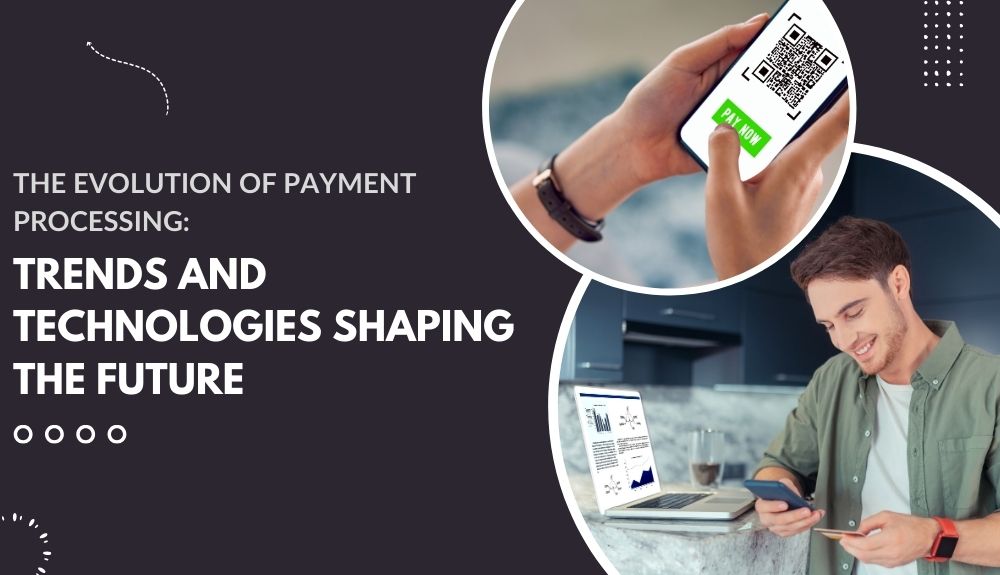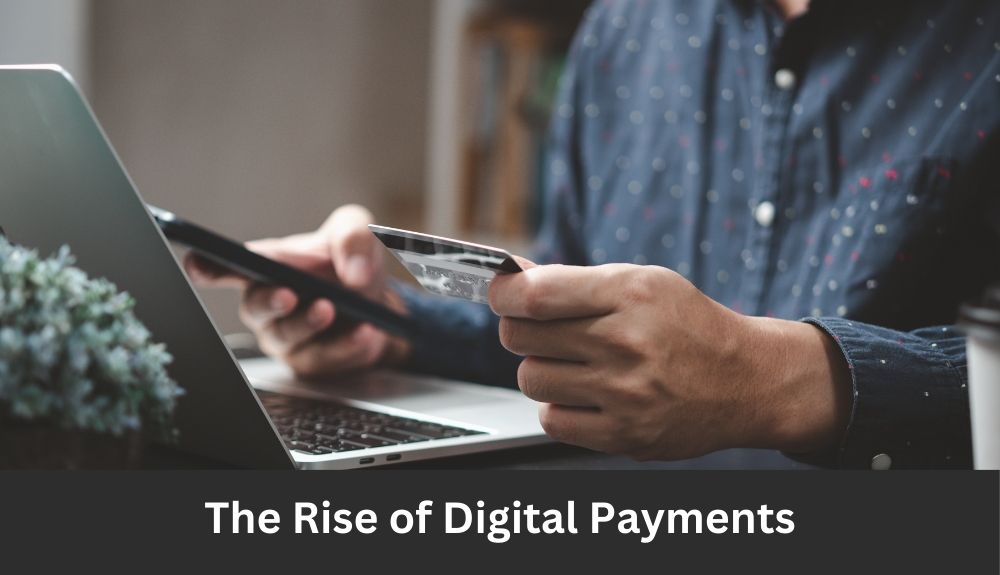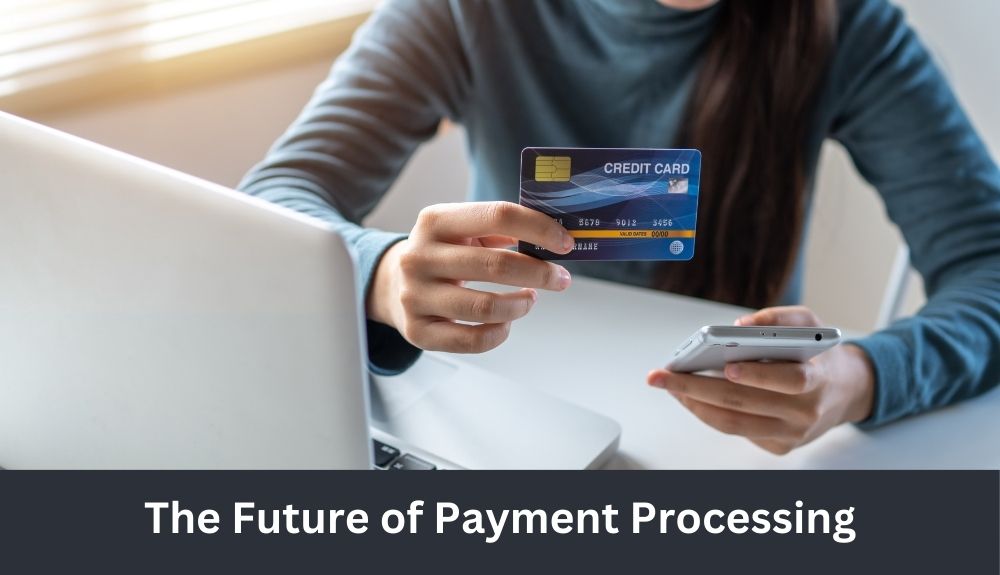
By max February 4, 2024
Introduction to Payment Processing
Welcome to the future of payment processing! In a world that’s increasingly driven by technology, it’s no surprise that our methods of making payments are evolving too. Gone are the days of fumbling for cash or writing out checks – we’re now entering an era where digital transactions reign supreme. From mobile payments and contactless technologies to cryptocurrency and blockchain, the landscape of payment processing is undergoing a revolutionary transformation.
In this blog post, we’ll dive into the exciting trends and technologies shaping the future of payment processing. We’ll explore how traditional methods have paved the way for new and innovative solutions that offer convenience, security, and efficiency like never before. So fasten your seatbelts as we embark on a journey through time to discover what lies ahead in this ever-changing realm!
Are you ready? Let’s get started!
Traditional Methods of Payment Processing
In the not-so-distant past, payment processing primarily revolved around cash transactions. Customers would physically hand over money to merchants in exchange for goods or services. This method was simple and straightforward but had its limitations.
As societies evolved and technology advanced, traditional methods of payment processing expanded to include checks and credit cards. Checks offered a more convenient way for customers to make payments without carrying large amounts of cash. Credit cards revolutionized the industry by allowing consumers to make purchases on credit, thus increasing their purchasing power.
With the advent of the internet, online payment processors emerged as a popular alternative. Companies like PayPal and Stripe revolutionized e-commerce by providing secure platforms for individuals and businesses to send and receive payments electronically.
Despite these advancements, traditional methods still have their place in certain industries. Cash is still widely accepted in small businesses, street markets, or when dealing with unbanked populations where electronic payment options may be limited.
Checks are often used for larger transactions such as rent payments or business-to-business transactions that require additional documentation.
Credit card payments remain prevalent due to their widespread acceptance at retail stores both online and offline. Merchants also benefit from credit card processors’ ability to handle chargebacks and fraud protection measures.
While traditional methods continue to play a role in today’s society, technological advancements have paved the way for newer forms of payment processing that offer increased convenience and security.
The Rise of Digital Payments

In today’s fast-paced world, digital payments have become increasingly popular and convenient. With just a few clicks or taps on our devices, we can make purchases, transfer money, and pay bills without the need for physical cash or cards.
One of the key drivers behind the rise of digital payments is the rapid advancement of technology. The widespread adoption of smartphones and internet connectivity has made it easier than ever to access online payment platforms and services. Companies like PayPal, Apple Pay, Google Pay, and Venmo have revolutionized the way we handle financial transactions.
Digital payments offer several advantages over traditional methods. They are faster, more secure, and often come with added features such as transaction history tracking and loyalty rewards. Whether you’re shopping online or making in-store purchases with your mobile device or wearable tech, digital wallets provide a seamless experience that eliminates the need to carry bulky wallets or worry about losing cash.
Another factor contributing to the growth of digital payments is changing consumer behavior. Millennials and Gen Z individuals who grew up in a digitally connected world are driving this shift towards cashless transactions. These tech-savvy generations value convenience above all else – they want instant gratification at their fingertips.
Moreover, businesses are also embracing digital payment options as they realize their potential for increased sales and improved customer satisfaction. Offering various payment methods gives companies an edge in attracting customers who prefer quick and hassle-free transactions.
As technology continues to advance at a rapid pace, we can expect even more innovations in digital payment processing. Biometric authentication methods such as fingerprint scanning or facial recognition could further enhance security while providing added convenience.
Mobile Payments and Contactless Technologies
In today’s fast-paced world, convenience is key. And when it comes to payment processing, mobile payments and contactless technologies are revolutionizing the way we pay for goods and services. Gone are the days of fishing through your wallet for cash or fumbling with a credit card – now all you need is your smartphone.
With mobile payment apps like Apple Pay, Google Wallet, and Samsung Pay, consumers can simply tap their phones on a compatible terminal to make a purchase. This eliminates the need for physical cards or cash, making transactions quick and seamless. Plus, many of these apps offer added security features like fingerprint or facial recognition technology.
Contactless technologies take this convenience even further by allowing users to make payments without physically tapping their phone on a terminal. Instead, they can simply wave their device near the reader to complete the transaction. This technology utilizes Near Field Communication (NFC), which enables devices to communicate wirelessly over short distances.
The popularity of mobile payments and contactless technologies has skyrocketed in recent years due to their ease of use and enhanced security measures. It’s no wonder that more businesses are adopting these methods as part of their payment processing options.
As technology continues to advance at an unprecedented rate, we can expect even more innovations in mobile payments and contactless technologies. From wearable devices that allow us to make purchases with just a flick of our wrist to biometric authentication methods that ensure secure transactions, the future looks promising for this evolving form of payment processing.
So next time you’re out shopping or dining out, leave your bulky wallet at home and embrace the simplicity of mobile payments and contactless technologies. It’s not just convenient – it’s the way forward in our increasingly digital world!
Cryptocurrency and Blockchain in Payment Processing
The advent of cryptocurrencies like Bitcoin has brought about a revolution in the world of payment processing. Unlike traditional methods that rely on centralized intermediaries such as banks, cryptocurrencies operate on decentralized networks using blockchain technology.
Blockchain is essentially a digital ledger that records all transactions made with a particular cryptocurrency. It provides transparency, security, and immutability by storing transaction data across multiple nodes or computers participating in the network.
One key advantage of using cryptocurrencies for payments is the elimination of intermediaries. This means faster and cheaper transactions, particularly for cross-border payments. Additionally, since blockchain records are tamper-proof, it enhances security and reduces fraud risks.
Moreover, cryptocurrencies offer privacy to users who value anonymity in their financial transactions. While traditional payment methods often require personal identification information, cryptocurrencies allow individuals to transact pseudonymously.
However, despite these advantages, there are challenges associated with widespread adoption of cryptocurrency payment systems. One major hurdle is scalability as blockchains need to handle large volumes of transactions without compromising speed or cost-effectiveness.
Furthermore, regulatory uncertainties surrounding cryptocurrencies pose concerns for governments and financial institutions alike. Countries worldwide are grappling with how to regulate this emerging form of currency while ensuring consumer protection and preventing money laundering activities.
Despite these challenges though, the potential benefits offered by cryptocurrency and blockchain technology have sparked interest among businesses looking for innovative ways to improve their payment processing systems. As more companies integrate cryptocurrency options into their platforms or accept them as a form of payment directly from customers; we can expect further evolution in this space.
AI and Machine Learning in Fraud Detection
AI and machine learning have revolutionized the world of payment processing by enabling more efficient fraud detection systems. These technologies have the ability to analyze vast amounts of data in real-time, identifying patterns and anomalies that may indicate fraudulent activity.
With AI-powered algorithms constantly learning from new data inputs, these systems can adapt and improve over time, staying one step ahead of evolving fraud techniques. By automatically flagging suspicious transactions or behaviors, AI helps protect both consumers and businesses from financial losses.
Machine learning models are trained on large datasets containing historical transaction records. This allows them to identify common characteristics associated with fraudulent activity, such as unusual spending patterns or multiple transactions made within a short period of time. As new transactions occur, these models compare them against their learned patterns to determine the likelihood of fraud.
One key advantage of AI-based fraud detection is its ability to detect emerging threats that traditional rule-based systems might miss. Fraudsters are constantly evolving their tactics to exploit vulnerabilities in payment processes. With machine learning algorithms continuously adapting to new trends and techniques, they can quickly spot previously unseen patterns indicative of fraudulent behavior.
Moreover, AI-driven fraud detection systems minimize false positives by refining their understanding of legitimate customer behavior over time. Through continuous analysis and feedback loops, these models become increasingly accurate at distinguishing between genuine transactions and potential threats.
While AI has significantly improved fraud prevention strategies for payment processing companies, it’s important to note that it is not infallible. Fraudsters also employ sophisticated methods designed specifically to bypass machine learning algorithms’ predictive capabilities. Therefore, human expertise remains crucial in monitoring system outputs and investigating flagged cases further.
The Future of Payment Processing

As technology continues to evolve and shape the way we live our lives, it is no surprise that payment processing is also undergoing a transformation. The future of payment processing holds exciting possibilities for businesses and consumers alike.
One major trend that will shape the future of payment processing is the rise of biometric authentication. We are already seeing fingerprint scanning and facial recognition being used as secure methods for authorizing payments. This not only enhances security but also provides a seamless user experience.
Another area that holds immense potential is the Internet of Things (IoT). With more devices becoming interconnected, it opens up new avenues for payment processing. Imagine being able to make purchases directly from your smart fridge or car! This convenience will undoubtedly revolutionize how we transact.
Artificial intelligence (AI) and machine learning are set to play a significant role in fraud detection within payment processing systems. These technologies have the ability to analyze vast amounts of data in real-time, allowing for faster identification and prevention of fraudulent transactions.
Additionally, blockchain technology has gained considerable attention in recent years due to its decentralized nature. It offers enhanced security, transparency, and efficiency in financial transactions. As more businesses explore incorporating blockchain into their payment processes, we can expect even greater advancements in this area.
Moreover, there is an increasing focus on improving cross-border payments through digital currencies like stablecoins or central bank digital currencies (CBDCs). These cryptocurrencies offer faster transaction speeds and lower fees compared to traditional banking systems.
Virtual reality (VR) and augmented reality (AR) may introduce entirely new ways of making payments by creating immersive shopping experiences where users can simply select items with hand gestures or gaze control before seamlessly completing their purchase.
The future of payment processing is undoubtedly exciting as emerging technologies continue to reshape how we conduct financial transactions. Businesses need to stay adaptable and embrace these innovations if they want to remain competitive in this rapidly changing landscape
Conclusion
The world of payment processing has come a long way, evolving from traditional methods to cutting-edge technologies that are shaping the future of transactions. We have witnessed the rise of digital payments, mobile wallets, and contactless technologies that have revolutionized how we make purchases. Cryptocurrency and blockchain technology have also made their mark in the payment industry, offering new possibilities for secure and decentralized transactions.
Moreover, AI and machine learning algorithms are playing a crucial role in fraud detection and prevention, making it easier for businesses to safeguard against fraudulent activities. These advancements not only enhance security but also improve efficiency in payment processing.
As we look towards the future, it’s clear that payment processing will continue to evolve at a rapid pace. With advancements in biometric authentication systems like fingerprint recognition or facial recognition becoming more prevalent, we can expect even more seamless and secure transactions.
Additionally, emerging technologies such as Internet of Things (IoT) devices will likely integrate with payment systems seamlessly. Imagine being able to pay for your groceries directly from your smart fridge or settle bills automatically through connected devices within our homes!
The world of payment processing is entering an era where convenience meets security. As technology continues to advance rapidly, we can anticipate even more innovative solutions that will reshape how we handle financial transactions.
So fasten your seatbelts because the journey is just getting started – exciting times lie ahead for both consumers and businesses alike!
